Compass Travel Vietnam
The nomadic life of flower season adventurers
Making a living with beekeeping for honey, beekeepers have chosen a nomadic life, drifting according to the flower seasons.
Eat and sleep under the canopy of the forest
In the days just off Tet, under the vast canopy of cashew nuts in Dak R’tih commune (Tuy Duc district, Dak Nong province), beekeepers are training to prepare for a new “honey-beating” crop.
This year, thanks to unseasonal rains, and an early bloom of cashew and coffee flowers, beekeepers are very excited because honey production is expected to be higher than last season.
Gently inspecting each box of bees, Mr. Pham Duy Dong (from Thanh Hoa) said that after more than a month of bringing bees to Dak R’tih commune, he got 2 times of honey. It is expected that, after the last batch of coffee flowers, Mr. Dong will collect honey one more time and then leave this place to another place.
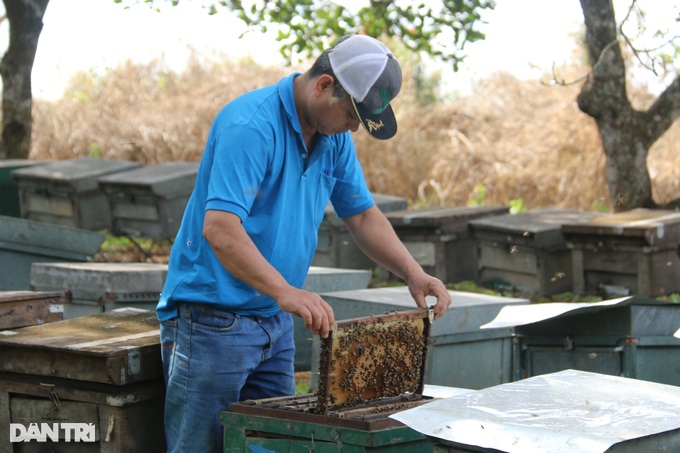
“I brought here more than 400 boxes of bees before the Lunar New Year. The time before Tet, the wind was strong and it was cold, so the first time honey was not much. However, after that, the cashew tree and coffee tree encountered fruit rain. season, early flowering, bees make more honey. Last time I took honey, I got 1.4 tons,” said Mr. Dong.
This is the first year that Mr. Dong and his wife come to Dak Nong to raise bees. The couple rented a cashew garden from a household to place bees and then set up a tent right under the cashew canopy to live in. Life without electricity and clean water has become a familiar thing for beekeepers.
“Every time I take a bath, I take a can to go to the river, stream or to the surrounding houses to ask for water. As for lighting, my wife and I use solar-powered lights, mainly to look after and protect I don’t watch TV at night, so I don’t need a lot of electricity,” said the beekeeper with 9 years of experience.
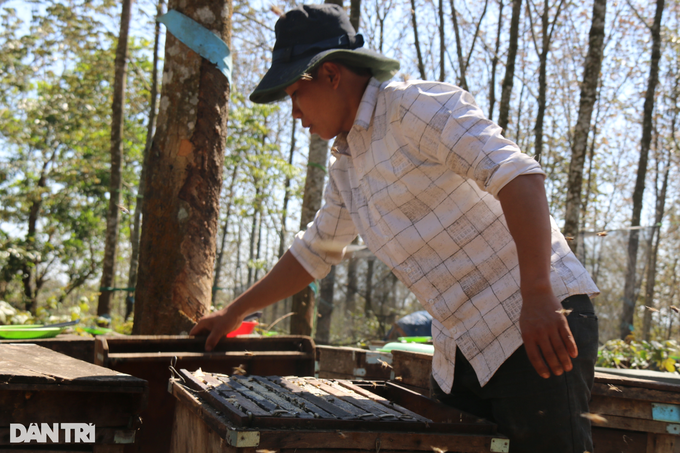
In a rubber forest in Nam Nung commune (Krong No district, Dak Nong province), a group of beekeepers is also busy for the final honey collection.
Mr. Do Ba Chung (from Dak Lak) said that since the end of last year, when the rubber leaves were falling, beekeepers from many places had come here to set up camps and raise bees. Bees get honey from the leaves and young rubber tops, so there is only one month a year to exploit honey under the canopy of rubber forests.
“Beekeeping is here and there, wherever there is food for bees, I go there. Beekeeping under a rubber canopy does not depend much on flowers, but in some years there is little honey, must feed bees with more pollen and water. road,” shared Mr. Chung.
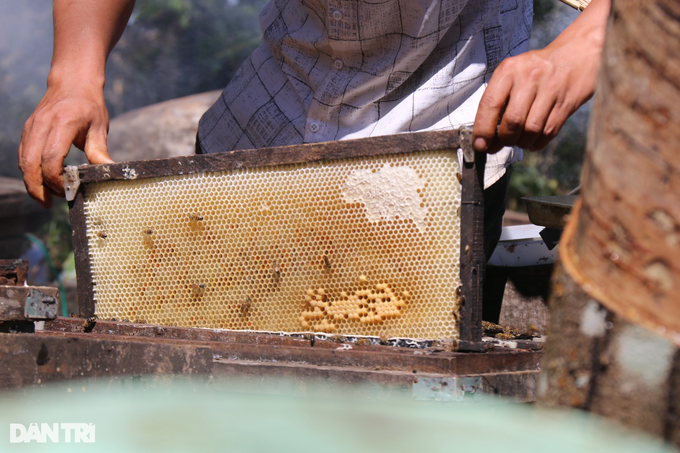
Living a nomadic life under the canopy of rubber forests, the hut of Mr. Chung and the beekeepers is very simple. The tent is covered with tarpaulin, in addition to an iron bed, surrounded by beekeeping equipment.
At night, a group of beekeepers take turns sleeping in an outdoor hammock both to look after the bees and to make room for others to sleep.
“At the end of the year, the wind is cold, there are nights when the temperature is only about 14 degrees Celsius, we have to light a fire to warm up,” said a beekeeper.
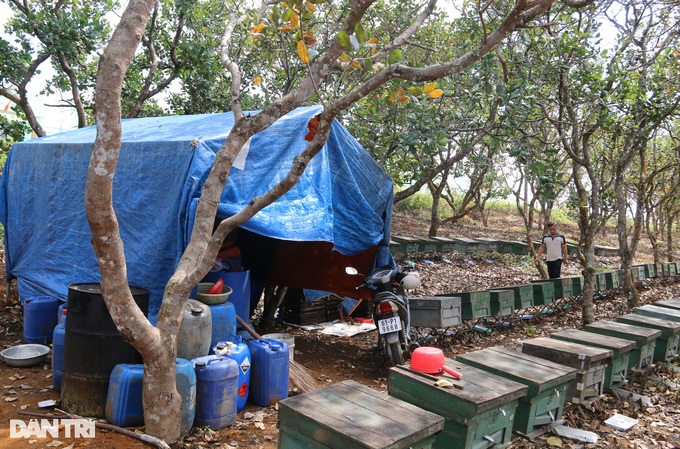
“Many empty-handed cases must also be accepted”
Not far from Mr. Dong’s cashew garden, Mrs. Phan Thi Suong and her husband (Binh Duong province) also ordered more than 400 boxes of honey bees.
6 years following her husband wandering around the countryside to find honey is also 6 years when the couple eat and sleep under the rubber canopy and pepper. Hard work, arduous and even dangerous, but when holding golden honey bridges, waves, happiness is evident in the eyes of the young couple.
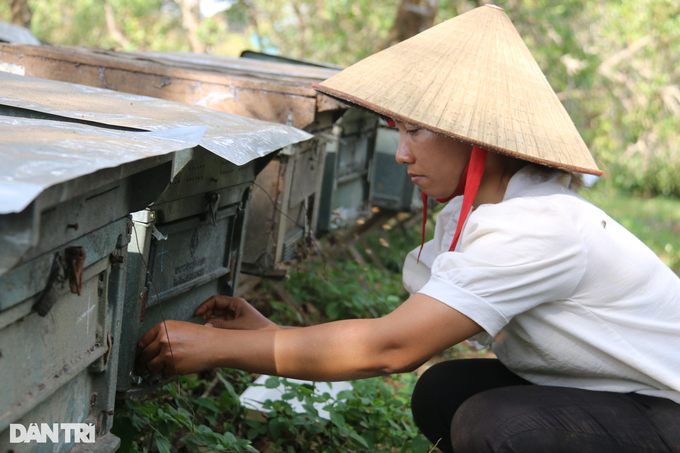
Ms. Suong confided that for beekeeping for honey, beekeepers must understand the behavior of bees. Besides, choosing the location of the bee colony is also very important.
Bees need a place with an abundant source of flowers and leaves, far from residential areas, with favorable weather, but the source of honey must be safe, not affecting the quality of honey as well as the health of worker bees.
“In some areas, people have a habit of using pesticides to protect flowers and increase fruit setting, so beekeepers have to regularly check to protect their bees. where, but there have been years, my family’s bee swarm was poisoned, damaging the whole colony, leaving the whole family empty-handed,” said Ms. Suong.
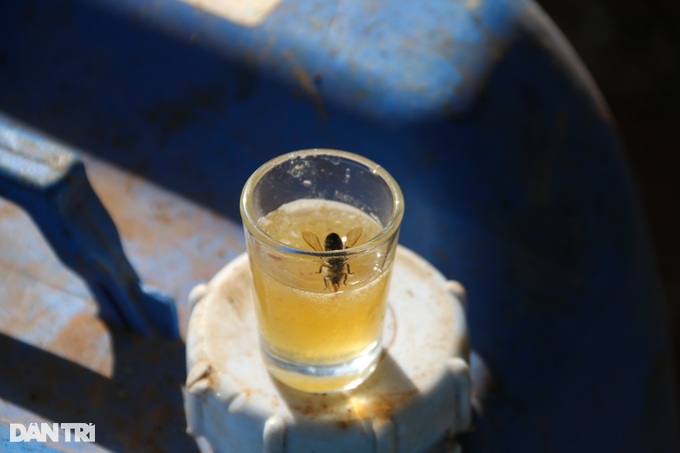
According to the beekeepers, in recent years, the demand for honey of the people is very large, traders come to the garden to buy.
Currently honey is about 100,000 VND/kg, which is said to be a high price, making beekeepers optimistic about a successful crop
According(Dan Tri)
The nomadic life of flower season adventurers
vinlove.
Source: vinlove









